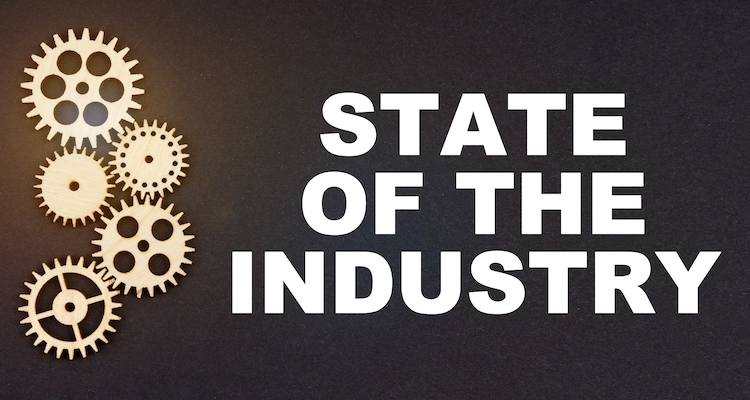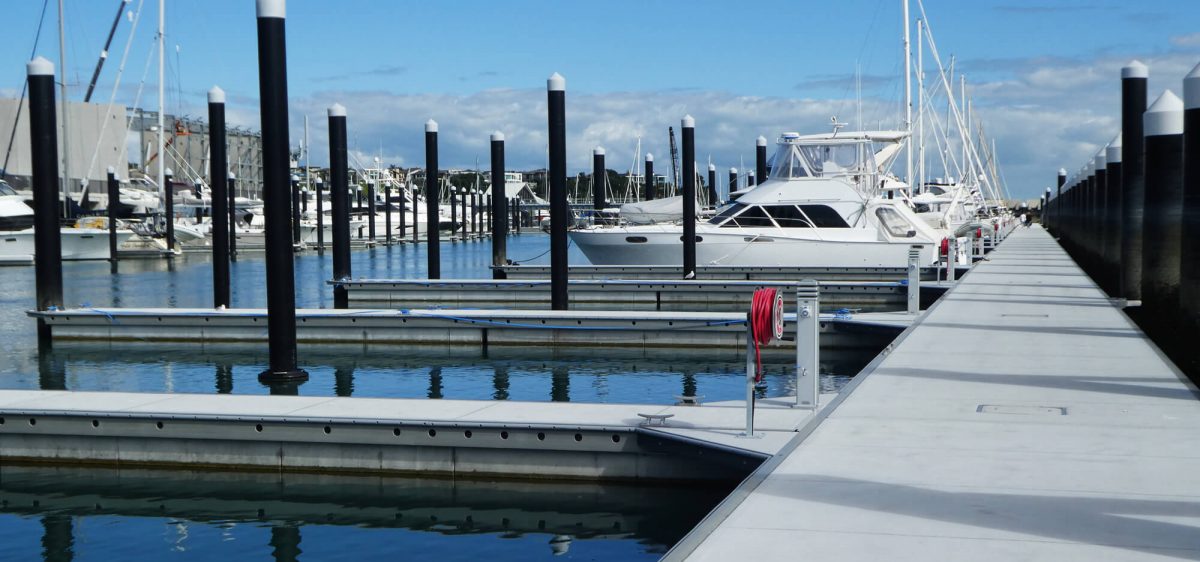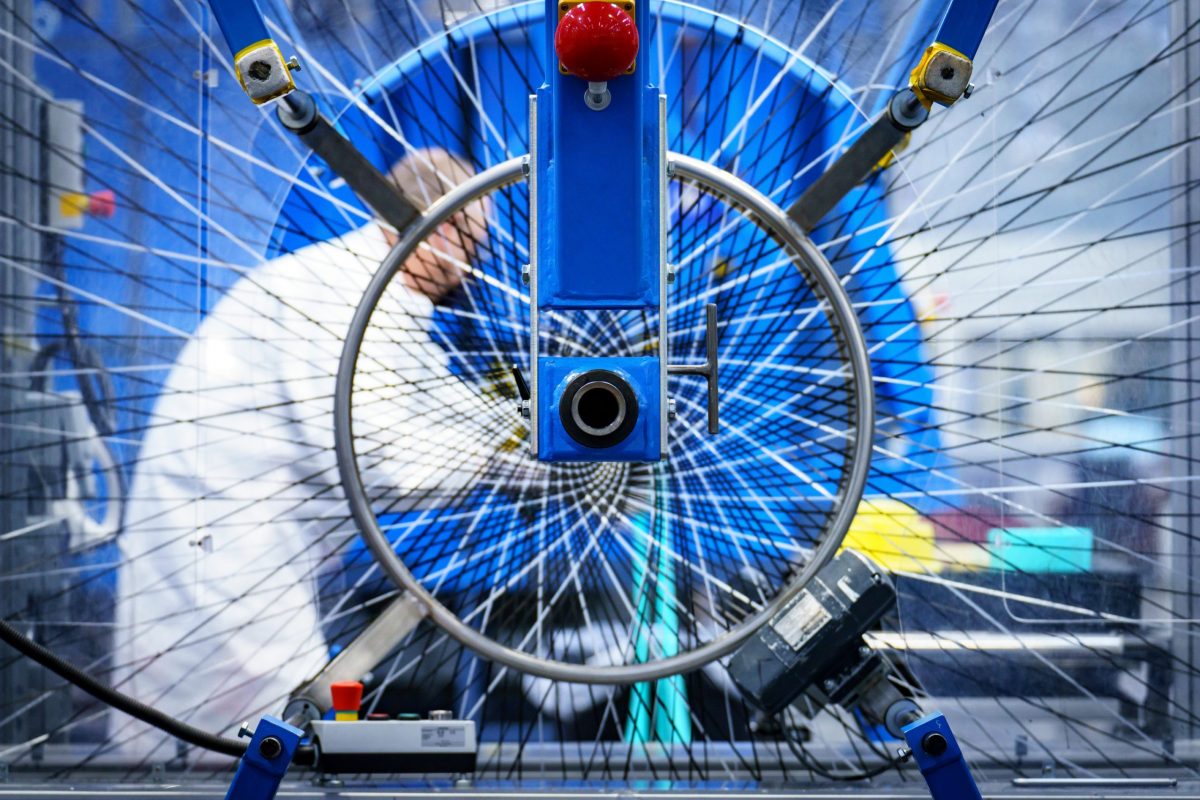

2022 State of the Industry Report
As the new year began and the Omicron variant of COVID-19 led to a surge in cases, a sense of deja vu permeated the business landscape. But economists say there is reason for optimism in 2022. In its annual report condensing key viewpoints from dozens of investment outlooks, Bloomberg News forecast that the global economy will grow by 4.5% this year.
Composites Manufacturing magazine caught up with four consultants to shine a spotlight on three key market segments in the composites industry and provide predictions on glass and carbon fiber.
The Automotive Market
By Marc Benevento, President
Industrial Market
Last year will be remembered for the promise of a strong recovery of automotive production followed by the disappointment of supply chain disruptions that suppressed year-over-year growth. However, brighter days are ahead for suppliers to the industry as production is expected to recover to pre-pandemic levels over the next 24 months. Furthermore, the continued shift toward electric vehicles will favor increasing use of composite materials in the automotive industry.
The global market for light vehicle composite materials was 3.7 billion pounds in 2021, far short of where it was just a few years ago. Global light vehicle production plummeted 16% in 2020 due to COVID-19 shutdowns, and demand recovered more quickly than a stressed supply chain could support. After a strong start to 2021, global production gained a paltry 2% over a disastrous 2020, leaving automotive composites consumption 20% below the pre-pandemic level.
Despite the difficulties of the past two years, better times are ahead for suppliers of automotive composites. Demand for automobiles remains strong, particularly in North America. Supply chain constraints are expected to ease over the course of 2022, and production should return to pre-pandemic levels by late 2023 or early 2024. Suppliers that have weathered the storms of the past two years have reason to hope that the next two years will present a more hospitable business environment, with 8 to 10% annual volume growth expected in that timeframe.
In addition to the tailwind of market recovery, composites continue to win automotive applications based on the value they provide carmakers in terms of cost, weight and performance. Electric vehicles are particularly well suited to composites due to their low under hood temperatures and the position they currently occupy in the market, which will expand the available market for manufacturers of composite materials in automobiles.
Elimination of the internal combustion engine and exhaust system will significantly lower the operating temperature requirement of many automotive parts, creating new opportunities for composites. Battery covers and enclosures are a perfect fit for composites due to their high strength-to-weight ratio, corrosion resistance, design flexibility and part consolidation opportunities versus stamped metal assemblies. Challenging new fire-resistance standards for electric vehicle components can be met with the selection of an appropriate resin system or with the addition of intumescent coatings.
The current market position of electric vehicles also favors growth of composite materials. Because today’s batteries cost more than an equivalent gasoline engine, electric vehicles occupy a premium position in the market. The high selling price of these vehicles limits sales volume, however, which generally favors composites. As production volume decreases, the fixed cost of dies for steel or aluminum stampings becomes a larger part of the unit part cost, which improves the economics of composites for applications such as closure panels and truck beds. This trend will continue for at least the first half of the decade, after which battery costs are expected to be nearly on par with internal combustion engines.
The growth trajectory of automotive composites is illustrated by indexing vehicle production and automotive composites volume to a base year of 2017 and projecting demand through 2025. Should composites continue to grow above the market, as they have for the past decade, automotive composite volume will eclipse the base year a full year earlier than light vehicle production.
Figure X: Light Vehicle Production & Automotive Composite Outlook
Source: Industrial Market Insight
The Glass Fiber Market
By Dr. Sanjay Mazumdar, CEO
Lucintel
More than two years since the COVID-19 outbreak, the pandemic’s effect lingers on manufacturing operations across industries. The entire supply chain has been disrupted, and the glass fiber industry is no exception. Factors including shipping delays, increases in ocean freight and container cost, decreased Chinese exports and customer demand have led to shortages of composite raw materials, such as glass fiber and epoxy and polyester resin in North America.
Even with supply chain issues, the U.S. glass fiber market grew 10.8% in 2021, with demand increasing to 2.7 billion pounds compared to 2.5 billion pounds in 2020. Construction, pipe and tank, electrical and electronics, wind energy, consumer goods and marine applications experienced significant growth, while the aerospace market declined in 2021.
The U.S. glass fiber industry benefitted considerably from growth in the wind energy industry in 2021 due to a rush to get construction started in time to qualify for the production tax credit (PTC) before its expiration at the end of the year. As part of the COVID relief packages, the U.S. government extended the PTC to 60% of the full credit amount for wind projects that began construction by Dec. 31, 2021. Lucintel estimated 8% growth in the U.S. wind energy market in 2021 after double digit growth in 2020.
The marine market also grew during the pandemic as consumers sought safe, socially distanced leisure activities in the outdoors. The U.S. glass fiber market for marine was estimated to grow by 18% in 2021.
In terms of supply and demand dynamics in the glass fiber industry, the utilization rate increased to 91% in 2021 from 85% in 2020 due to growth in consumption of glass fiber in all end use industries. The global glass fiber capacity was 12.9 billion pounds in 2021. Lucintel predicts that the fiberglass plant capacity utilization rate in 2022 will reach 95%.
In the next 15 to 20 years, there will be substantial innovation in the glass fiber industry, particularly in the development of high-strength and high-modulus glass fiber, which competes with other high-performance fibers like carbon fiber. Two mega trends across market segments that will lead to further innovations are light-weighting and carbon dioxide reduction.
For example, light weight solutions are increasingly important in the wind energy market thanks to the rising number of offshore wind turbines, repowering of old turbines and growing installations with high turbine capacity in locations that receive high-speed wind. Throughout the market, the average size of wind turbines continues to grow, which results in a need for larger and stronger blades. This, in turn, creates demand for lighter, stronger material. Several companies, including Owens Corning and Jushi, have developed high-modulus glass fiber to meet market demand.
While GFRP composites are a staple in the marine industry, new technologies are changing the face of this market. Moi Composites, which developed an advanced 3D technology, has produced the MAMBO (Motor Additive Manufacturing Boat). The 3D-printed 6.5-meter power boat, made from continuous glass fiber-reinforced thermoset composites, has no hull-deck division and employs concave and convex shapes not possible with traditional composite fabrication. The marine industry has also taken steps toward greater sustainability. RS Electric Boats developed the first all-electric rigid inflatable boat (RIB) incorporating fiberglass and recycled carbon fiber in major structural components.
In conclusion, the use of glass fiber in various industries is expected to recover from the deleterious effects of the pandemic. Transportation, construction, pipe and tank, and the marine market in particular will play a major role in helping the U.S. market grow back to pre-pandemic conditions. Overall, the U.S. glass fiber market is expected to witness strong growth in 2022 and fully recover from the fallout caused by the pandemic.
Figure X: Global Glass Fiber Demand and Capacity
Source: Lucintel
The Aerospace Market
By Richard Aboulafia, Managing Director
AeroDynamic Advisory
The aircraft industry was hit by the COVID-19 pandemic as hard as any industry. World aircraft deliveries fell 35% in 2020 from 2019, while world air travel demand fell 66%. The industry hadn’t seen anything like these numbers since the jet age began.
Yet there are reasons for cautious optimism. According to preliminary year-end numbers, the industry grew 7.5% in 2021. And 2022 should see a very strong 22% expansion.
Military deliveries were hit last year solely for logistical reasons, including pandemic-related factory closures and supply chain disruptions. Actual demand wasn’t hit at all. Countries that initially announced pandemic-related defense budget cuts, such as South Korea, reversed those plans and increased spending over the previous year.
Domestic and export defense demand has been strong, both for geopolitical reasons and because defense spending is viewed as a good way for governments to support national aerospace industries and national economies in a very difficult time. Military output will fully recover to pre-pandemic levels in 2022, with additional strong growth after that.
Business aircraft have also come back fast, with utilization recently passing 2019 peak levels. Corporate profits, equities markets and oil prices – the three big drivers behind demand – are all at very high levels, coupled with strong interest in avoiding the service cutbacks and high load factors of airline transport. Delivery numbers are recovering accordingly, and we will see a return to 2019 peak levels there (in units) next year.
Jetliners – normally accounting for around 60% of total industry output – are overall in good shape. We’re expecting air traffic to return to its 2019 peak in early 2023. Fuel prices are back from record lows to a high $80/barrel level, while jetliner financing costs remain quite low. This ratio – the cost of fuel to the cost of capital – is the most important determinant of jetliner market health after airline traffic. The market does best when expensive (but not too expensive) fuel provides an incentive to replace older jets and when there’s inexpensive financing available for those new jets. Right now, the ratio looks excellent.
The largest industry segment is single aisle jetliners. Deliveries increased by more than 40% in 2021 and will increase another 40+% in 2022. This is largely driven by the very strong domestic market recovery we’ve seen in North America and China. Also, there’s the impact of Boeing 737 MAX production and deliveries resuming, with a goal of 31 new build jets per month next year, in addition to deliveries of already-built MAXs.
Airbus, meanwhile, is aiming for record single-aisle rates. A320 family output was cut to 40 per month during the pandemic, but the manufacturer delivered 58 in November 2021. It’s aiming for a monthly rate of 64 by mid-2023 and possibly 70 to 75 in the following years.
Twin aisle jets are the only exception to this positive view. There was a widebody overcapacity problem before the pandemic. Also, this segment depends on international air traffic, which was hit hardest and is taking longest to recover. Meanwhile, the pandemic saw an acceleration in the shift toward single aisles, particularly Airbus’ A321neo, for international routes.
Some of the planes in our recovery forecast don’t involve new manufacturing. This year will see deliveries of scores of 787s and hundreds of 737 MAXs that were already built, so the supplier base won’t benefit much from them. Inflation could also impact supplier profitability. If inflation persists, interest rates will rise, impacting jetliner financing. If the Omicron variant or another COVID variant causes shutdowns, closed borders and another air traffic slump, some airlines and suppliers could prove unable to withstand another major crisis.
But as of this writing, the COVID-19 aviation downturn looks set to be remembered as shorter-lived and more sector-specific than originally feared. After falling off a cliff, the industry is heading sharply up.
Figure X: World Aircraft Deliveries by Value
Source: AeroDynamic Advisory
The Carbon Fiber Market
By Dr. Sanjay Mazumdar, CEO
Lucintel
Carbon fiber has come a long way over the years, impacting almost every market from aerospace to automotive and sporting goods. The key advantages of carbon fiber are high tensile strength, high stiffness, low density and a high chemical resistance, which lead to increased utilization in various sectors. Between 2010 and 2019, the carbon fiber industry experienced uninterrupted growth, with demand increasing from 82.3 million pounds in 2010 to more than 192 million pounds ($2.6 billion) in 2019.
Then in 2020, the COVID-19 pandemic caused unprecedented disruption, with the overall carbon fiber industry declining 9.7%. At the beginning of 2021, the carbon fiber industry performed well and showed positive signs. However, by the end of the year, overall carbon fiber demand grew only 4.4% due to supply chain issues and lower demand from the aerospace and automotive industries. Increasing wind turbine installations and growing demand of premium sports equipment were key driving factors for the carbon fiber industry last year.
Aerospace, one of the major end users of carbon fiber, was affected severely in 2020 and 2021. Before the pandemic, the Airbus A350 and Boeing 787 Dreamliner were built at a rate of 12 and 14 per month, respectively. However, due to travel bans and other COVID-related crises, production of these aircrafts dropped to two and three per month in 2021. As a result, carbon fiber demand for aerospace declined 33% in 2021 after a huge drop of 46% in 2020.
Lucintel forecasts that the demand for global carbon fiber in 2022 will increase by about 2.6% due to slow recovery in the aerospace market and slower growth in the wind market in 2022, where demand for carbon fiber-reinforced polymers grew by double digits in 2020 and 2021. However, there are plenty of new opportunities emerging. Lucintel sees immense prospects for carbon fiber in three areas: urban air mobility, hydrogen storage and fuel cells. Related technologies and applications are at the nascent stage but offer huge potential for future growth.
Urban Air Mobility (UAM)/Air Taxis – Increasing urban populations will lead to road congestion and demands for competitive modes of transport that can reduce traffic issues and save journey time. Electric vertical takeoff and landing (eVTOL) vehicles – or air taxis – are one future mode of transport that will rely on CFRP parts for structural and interior components.
Pressure Vessels for Hydrogen Storage – Greater emphasis on decarburization is driving demand for hydrogen-based fuels. Hydrogen storage tanks are used in transportation (car, trucks, rail, aerospace, etc.), distribution (mobile pipelines) and hydrogen refueling stations. Pressure vessels (Type IV) for hydrogen storage are gaining use in the automotive and aerospace industries. Carbon fiber composites are the ideal material for making Type IV and Type V pressure vessels. However, the high cost of carbon fiber is a challenge in these applications, especially if demand for hydrogen tanks grows rapidly.
Fuel Cells – Increasing demand for portable devices and interest in hydrogen fuel cell vehicles in developing countries are driving fuel cell demand. Carbon fiber composites are used in key components of fuel cell stacks. Major components such as bi-polar plates and gas diffusion layers are being made using CFRP, which not only reduces the system weight and part counts but also increases mechanical strength and corrosion resistance.
These and other emerging applications will continue to drive the growth of carbon fiber as end users seek the performance benefits of the material’s high strength and stiffness characteristics.
Figure X: 2021 Market Share of CFRP Parts’ Manufacturing Processes
Source: Lucintel
The Construction/Infrastructure Market
By Ken Simonson, Chief Economist
Associated General Contractors of America
Construction professionals and suppliers have reason to be optimistic about their prospects in 2022. But they can expect plenty of hurdles to overcome along the way.
The grounds for optimism reflect a recent pickup in several private nonresidential categories, enactment of the largest-ever federal infrastructure funding bill and continuing demand for both single and multifamily housing. Each of these sectors should contribute to growth in 2022.
In 2021, most types of nonresidential construction spending trailed 2020 levels until late in the year, aside from robust gains in distribution and data center structures. By year end, however, groundbreaking had occurred or been announced for numerous manufacturing facilities. Manufacturing expansion will continue to bulk up contractors’ order books in 2022. The industry can also expect a modest upturn in retail, office, hotel and leisure-related spending, although the timing for these segments will vary by region and will depend on the level of coronavirus outbreaks.
Infrastructure spending is heading for major expansion but mostly not before late 2022 or beyond. Highway spending may ramp up promptly since the funds will flow through established channels, much of it under existing allocation rules. In contrast, funding for categories such as broadband and electric vehicle charging will require setting up procedures for applying for and choosing projects. Once selected, projects will likely require more time to order and produce materials and assemble and train workers.
The construction/infrastructure industry must cope with three main challenges: labor availability, supply chain bottlenecks and materials costs. Each was an issue in 2021 as well, but the severity of the impediments they will present in 2022 will vary by firm.
Like other sectors, construction experienced record levels of job openings in late 2021. But two factors make filling positions especially tough. First, an ongoing survey by the Delphi Group at Carnegie Mellon University of individuals by coronavirus vaccination rate has consistently found that respondents who identify their occupation as construction have a much lower vaccination rate (57% as of late November) than other occupations (83%). As more owners require all personnel on their premises to be vaccinated, contractors are likely to have greater difficulty than in 2021 fielding full, healthy and eligible teams.
Second, the wage premium that construction has paid relative to other sectors has eroded sharply since the pandemic struck, while some other industries have improved working conditions as well as pay. From 2006 to 2019, hourly earnings for craft workers and other “production and nonsupervisory employees” in construction averaged 20 to 23% more than for all other private sector employees. That premium shrank to less than 18% in 2020 and 2021 as historically low-wage industries such as fast food, warehousing and local delivery services dramatically increased hourly wages and added bonuses. In addition, some industries can offer flexible hours or work locations. As a result, construction firms are likely to have a harder time attracting and retaining workers unless they raise wages.
Supply chain problems include outright unavailability of some materials, extreme lead times on production and transportation bottlenecks. All these woes have affected the construction/infrastructure industry in 2021 and many will continue in 2022. However, manufacturing capacity is gradually coming online. And some shortages, such as the lack of numerous construction plastics attributable to the shutdown of resins plants in Texas caused by an extreme cold snap, will probably not recur.
Materials costs are likely to be volatile, but in both directions instead of rising across the board as in the first half of 2021. After hitting record levels in May through August 2021, futures or spot prices have dropped considerably for aluminum, copper, steel and petroleum products, implying that delivered prices for materials using these inputs will fall as well. However, the declines are unpredictable and subject to sudden reversals, as shown by the extreme ups and downs in lumber prices throughout 2021.
In summary, contractors will be busy in 2022. Firms selling goods and services to construction/infrastructure can expect plenty of demand. But firms hoping to get a project built by a firm date at a known price may be out of luck.
Figure X: Change in Construction Spending
Source: Author’s calculations from U.S. Census Bureau, www.census.gov/constructionspending

SUBSCRIBE TO CM MAGAZINE
Composites Manufacturing Magazine is the official publication of the American Composites Manufacturers Association. Subscribe to get a free annual subscription to Composites Manufacturing Magazine and receive composites industry insights you can’t get anywhere else.











